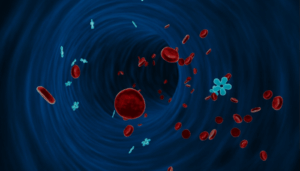In ageing and disease, apoptosis, autophagy, and senescence are the three often discussed mechanisms that cells can use to regulate their lifespan and respond to stress and damage.
Apoptosis is a programmed process of cell death characterized by controlled dismantling. In contrast, senescence refers to a state in which cells stop dividing due to various reasons:
- Telomere shortening: This is considered the most common trigger of senescence, as it is a natural consequence of cell division and ageing. When a cell reaches the Hayflick limit, and its telomere becomes too short, it is more prone to enter a state of senescence rather than apoptosis.
- DNA damage: Environmental factors such as exposure to radiation or toxins can cause DNA damage, triggering senescence. This is also a common cancer trigger, as mutations that arise from DNA damage can lead to uncontrolled cell growth.
- Mitotic stress: Stress placed on cells during cell division can trigger senescence to prevent damaged or abnormal cells from proliferating. This can occur in response to errors in chromosome segregation or mechanical stress on the cell membrane.
- Oncogene activation: Activation of oncogenes, which promote cell growth and division, can trigger senescence to prevent cancer development. This is less common than the other triggers listed above.
- Oxidative stress: While oxidative stress can lead to cellular damage and senescence, it is less clear how common this trigger is compared to others listed above. The role of oxidative stress in ageing and disease is an active area of research.
Senescence is one of the hallmarks of ageing because when cells enter this state of permanent growth arrest, they can no longer perform their normal functions, such as dividing and repairing damaged tissues.
Senescent cells also release various inflammatory molecules and cytokines, referred to as senescence-associated secretory phenotypes (SASPs).
Over time, the accumulation of senescent cells can contribute to chronic inflammation, a key driver of many age-related diseases, and a hallmark of ageing.
SASPs are thought to contribute to this chronic inflammation by activating immune cells and increasing the production of pro-inflammatory molecules.

Curcumin is a natural compound that is present in turmeric, which is a common spice used in Indian cuisine. Multiple studies have demonstrated that curcumin exhibits hemolytic properties, meaning it can eliminate senescent cells.
Additionally, SASPs can lead to tissue damage and impair the function of nearby cells, further contributing to the development of age-related diseases, including cancer, Alzheimer’s disease, and cardiovascular disease.
The strongest evidence supporting the causal relationship between cellular senescence and ageing is that the ongoing genetic or pharmacological removal of senescent cells extends health span and lifespan in mice[1]. Additionally, eliminating senescent cells through genetic or pharmacological means is therapeutic in many diseases modelled in mice[2].
Chronic Inflammation
Inflammation classically has been viewed as an immediate high-level and short-term (“acute”) response to tissue injury, infection, or other disease states, which leads to recognizable symptoms such as…
References






